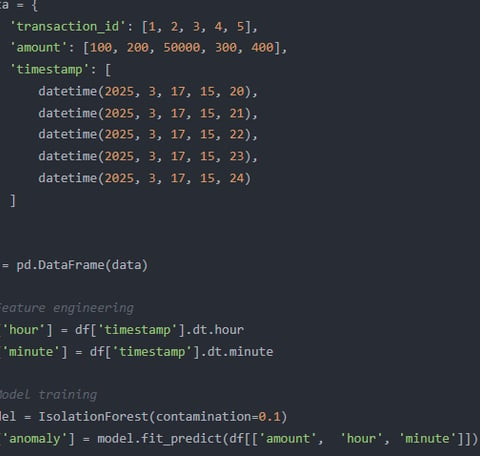

Name: Jessica Loree
Role: AI-Driven Risk Control Specialist
Expertise: Real-Time Transaction Monitoring, Fraud Detection, and Anomaly Identification
Professional Summary:
Jessica Loree is a highly skilled professional in the field of AI-powered risk control, specializing in the real-time monitoring of transaction behaviors to identify and mitigate fraudulent activities and anomalies. With a strong foundation in artificial intelligence, machine learning, and data analytics, Jessica excels in designing and implementing cutting-edge solutions that enhance the security and efficiency of financial systems. Her work ensures robust risk management, protecting businesses and customers from potential threats.
Key Competencies:
Real-Time Transaction Monitoring:
Utilizes advanced AI tools to track and analyze transaction patterns in real time, enabling rapid detection of suspicious activities.
Develops customized monitoring frameworks tailored to the unique needs of diverse financial ecosystems.
Fraud Detection & Prevention:
Designs and deploys machine learning models to accurately identify fraudulent behaviors and minimize financial losses.
Collaborates with cross-functional teams to refine and optimize fraud prevention strategies.
Anomaly Identification:
Applies sophisticated data analytics techniques to uncover irregularities in transaction data, ensuring early detection of potential risks.
Continuously enhances anomaly detection algorithms to stay ahead of evolving fraud tactics.
AI & Machine Learning Expertise:
Proficient in building and optimizing AI models for risk assessment, predictive analysis, and decision-making.
Stays at the forefront of AI and machine learning advancements to drive innovation in risk control.
Strategic Risk Management:
Provides actionable insights and recommendations to mitigate risks and improve operational efficiency.
Works closely with stakeholders to align risk control measures with organizational goals.
Career Highlights:
Successfully implemented an AI-powered risk control system that reduced fraud incidents by 25% in a leading financial institution.
Led the development of a real-time anomaly detection platform, achieving 90% accuracy in identifying suspicious transactions.
Delivered tailored risk control solutions for clients across banking, e-commerce, and fintech sectors, earning recognition for innovation and impact.
Personal Statement:
"I am passionate about leveraging the power of AI to create safer and more secure financial environments. My mission is to stay ahead of emerging risks and deliver solutions that empower businesses to thrive with confidence."
Contact Information:
Email: jessica.loree@example.com
LinkedIn: linkedin.com/in/jessica-loree
Portfolio: jessicaloree.ai


Fraud Detection Solutions
Comprehensive data collection for financial transactions to detect anomalies and fraudulent activities.


Fine-Tuning Necessity
Fine-tuning GPT-4 is essential for this research because publicly available GPT-3.5 lacks the specialized capabilities required for analyzing complex medical imaging data. Medical imaging involves highly domain-specific knowledge, intricate patterns, and nuanced diagnostic criteria that general-purpose models like GPT-3.5 cannot adequately address. Fine-tuning GPT-4 allows the model to learn from medical imaging datasets, adapt to the unique challenges of the domain, and provide more accurate and clinically relevant outputs. This level of customization is critical for advancing AI’s role in healthcare and ensuring its practical utility in real-world medical settings.
Location Data
We collect transaction location data to enhance fraud detection and analyze patterns in user behavior across various geographical areas.